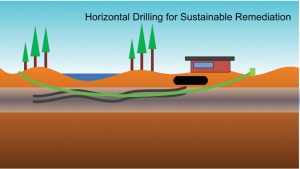Directional Drilling vs. Horizontal Drilling: A Comprehensive Comparison
When it comes to drilling techniques in the oil and gas industry, directional drilling and horizontal drilling are two prominent methods that have revolutionized the way wells are accessed and resources are extracted. While these techniques share similarities, they have distinct differences that play a crucial role in various drilling projects. What is directional drilling vs horizontal drilling?
The Basics of Directional Drilling
Directional drilling involves deliberately deviating the wellbore’s path from the vertical orientation. This technique enables operators to reach reservoirs that are not directly beneath the drilling location. By using specialized equipment and precise measurements, drilling can be directed at specific angles and trajectories.

Directional drilling is particularly beneficial in situations where:
- The target reservoir is located beneath sensitive areas such as urban areas, bodies of water, or environmentally protected regions.
- Multiple reservoirs can be accessed from a single drilling pad, reducing the environmental footprint and overall operational costs.
- Enhanced reservoir exposure can increase resource recovery and production rates.
Advantages of Directional Drilling
Directional drilling offers several advantages, including:
- Access to Remote Reserves: Directional drilling enables access to reserves that were previously deemed unreachable.
- Reduced Environmental Impact: This technique minimizes the need for creating numerous surface locations, which can disturb the environment.
- Cost Savings: By drilling multiple wells from a single location, operators can save on equipment, labor, and infrastructure costs.
The Fundamentals of Horizontal Drilling
Horizontal drilling involves drilling vertically to a certain depth and then gradually curving the wellbore to achieve a horizontal trajectory. This method allows for increased exposure to the reservoir rock, enhancing productivity and resource recovery.
Horizontal drilling is particularly advantageous in scenarios where:
- The reservoir rock has low permeability or porosity, requiring a larger contact area for efficient extraction.
- Natural fractures in the rock can be better intercepted with a horizontal wellbore, improving fluid flow.
- Well performance can be significantly enhanced by accessing more extensive reservoir sections.
Benefits of Horizontal Drilling
Horizontal drilling offers several benefits, including:
- Increased Production: The larger reservoir contact enhances productivity and facilitates higher hydrocarbon recovery.
- Improved Reservoir Management: Horizontal wells intersect more geological layers, providing valuable data for effective reservoir management.
- Enhanced Well Performance: Better control over fluid flow and reduced pressure drop can lead to improved well performance.
Key Differences and Applications
While both directional drilling and horizontal drilling offer substantial advantages, their applications and outcomes differ:

Directional drilling is often employed when the primary objective is to access remote or multiple reserves from a single location. It is commonly used in offshore drilling and environmentally sensitive areas. https://drillitco.com.au/
Horizontal drilling shines when the goal is to maximize reservoir contact and increase production rates. This technique is favored in unconventional reservoirs, such as shale formations, where optimizing hydrocarbon recovery is paramount.
Conclusion
Directional drilling and horizontal drilling are vital tools in the oil and gas industry, each offering unique benefits and serving different purposes. The choice between the two techniques depends on the specific geological, economic, and environmental factors of the drilling project. By understanding their differences and applications, operators can make informed decisions that lead to successful drilling ventures.

